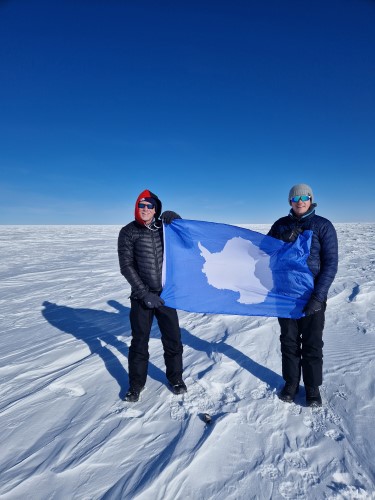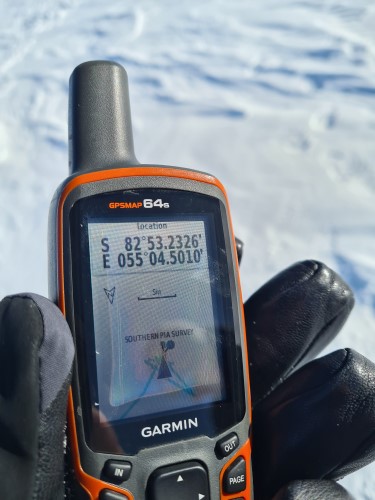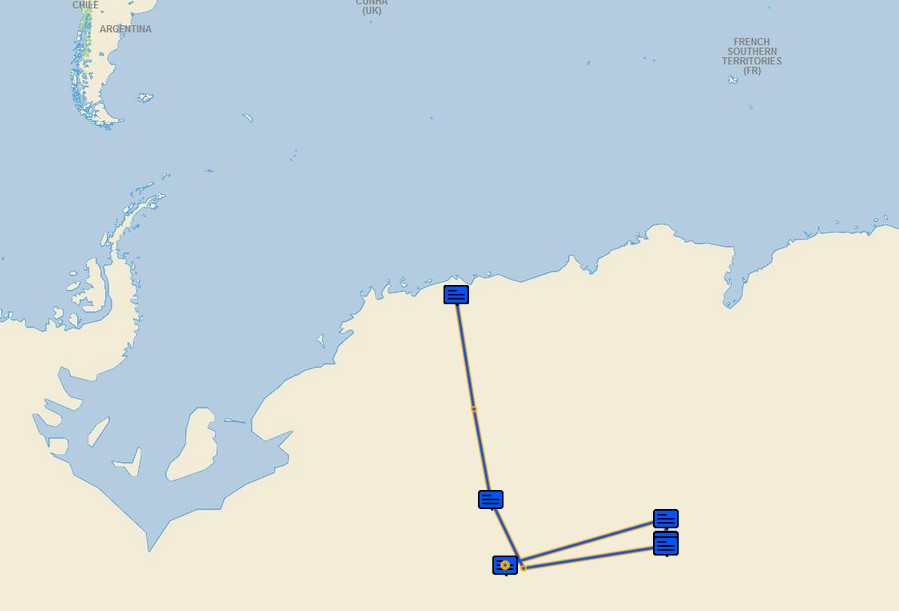Antarctic POI – Second Expedition
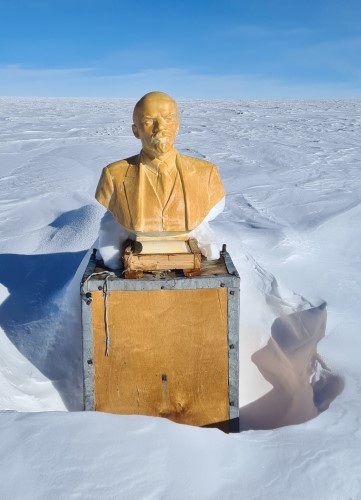
The second expedition followed the basic plan from the first expedition in most aspects. The aim was still to use a Twin Otter aircraft to get us from Wolf’s Fang ice runway to the Southern Pole of Inaccessibility and back via some pre-loaded fuel dumps at 78° and 83°.
The biggest difference in the planning was to remove two PAX from the aircraft, which had a double effect of reducing ‘dead’ weight and allowing us to replace that ullage with more fuel. Though we did make sure to include André, a Twin Otter mechanic without peer, and a bag of about 50 relays!
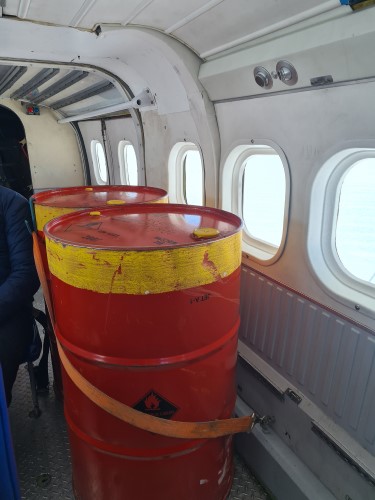
The second was to wait it out in Cape Town until a large enough weather window appeared at the PIA. We’d genuinely had enough of waiting around in tents the previous year to fill a lifetime. Between departing Cape Town and leaving for the PIA, the Otter would not be used for any other operations, to minimise the chances of mechanical failure.
Antarctic Bounce
Two weather windows were identified by Luke, the operations manager at White Desert, using the small amount of weather data available for the Pole of Inaccessibility (no bases, no weather stations). One window was on Wednesday 11th and the other on Friday 13th. Given Western superstition surrounding Friday 13th we decided we’d make every effort to hit the first window and use Friday as a backup.
And so we arrived at Wolf’s Fang around lunchtime UTC on the 10th January and bounced back out in the Twin Otter only two hours later following some frantic repacking of cold weather gear and a low-down from the resident medic.
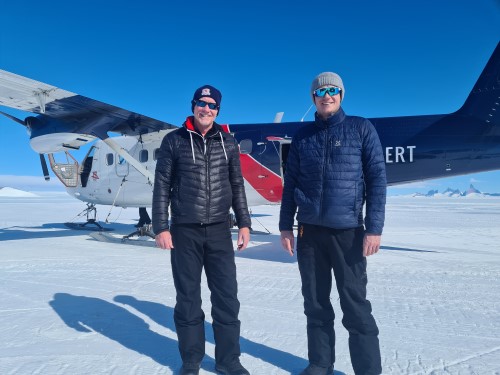
A fuel dump had been set up at 78° by the traverse team because the Twin Otter doesn’t have the range of a Bassler which is normally used for getting to and from the regular South Pole. The same traverse team had made a makeshift ski-way for the Otter by ‘pisting’ a section of the ice.
The landing on the ski-way was rough to say the least. That made us wonder about the viability of landing on virgin Antarctic snow and ice at the actual pole.
Landing at the second fuel dump at 83°, otherwise known as Dixie, was much easier with that being a well established staging point for South Pole expeditions. This is where we overnighted.
On the downside, visibility had dropped dramatically as we landed, fueling our anxieties about the weather window at the pole. Was the attempt in jeopardy again?
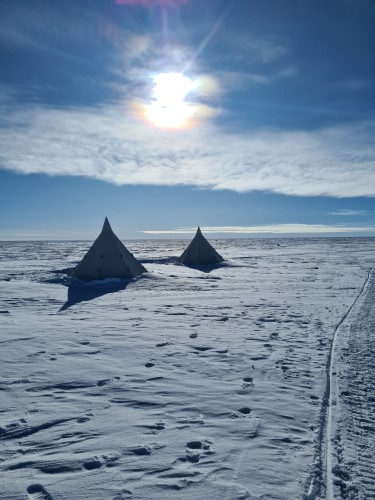
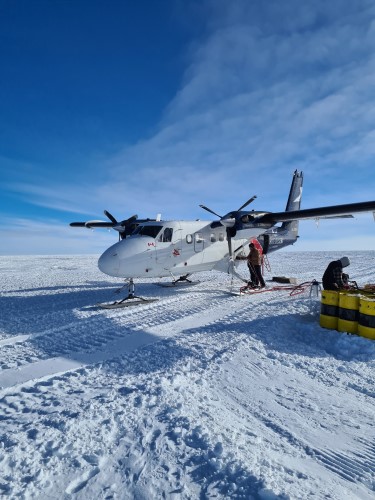
The following morning, we awoke to see if there’s been any change in the two-hour window we were expecting in the early afternoon. Despite the low temperature, the skies were blue and not a hint of wind. No change in the forecast window, so we were on! However, having been close to success, and yet still failed on other expeditions, our emotions were still in check.
Landing at the POI
By now the Twin Otter is flying only 100m or so above the ice sheet, but we were still at an altitude of up to 3,800m – the pole is at 3,700m. The Twin Otter isn’t pressurised, so we all made use of the onboard oxygen bottles, especially Mika and myself who had freshly arrived from sea level.
Arriving close to the pole, the weather was still ideal. So we knew at least a good attempt to land would be possible. Time for excitement to at least begin.
The plan was to make three or four touches with the skis to judge the friction levels and to start making a smoother section of ice. The first touch went according to plan and we circled back for the second approach. This time, as we touched the ice, the brilliant pilots, Pete Pender and Cody Brandl, decided enough was enough and slapped the Otter down.
We’d landed about 3km from our target – at which point the Twin Otter turned into an Uber and we ‘motor skied’ towards the Pole coordinates of 82°06’S, 54°58’E. As we closed in, the sense of excitement was rising before we veered away. Cody and Pete had spotted the bust of Lenin – Wow!
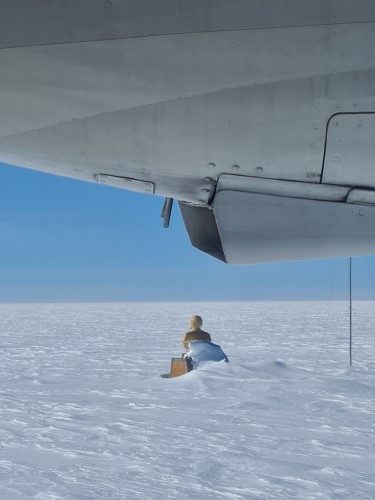
We had half expected a few minutes fighting against gales and fog, but this seemed like we could wander around in t-shirts. It was only -28°C, which is positively balmy for this location! Our sense of excitement was mixed with disbelief and, more than a touch of, relief that we’d finally made it.
The Current Location of the Historic Antarctic POI
The bust of Lenin is still visible with around 1.8m of the wooden plinth and the bust above the ice, as you can see in the top photograph.
Part of the comms mast (see photo on main page) is also visible along with an anemometer. I couldn’t tell if these were the originals or not. There’s also another abandoned object about 50m from the bust. Any ideas what this might be?

On the day of the visit, 11th January 2023, the bust of Lenin could be found at
- Latitude: 82°06.7017’S
- Longitude: 55°02.0340’E
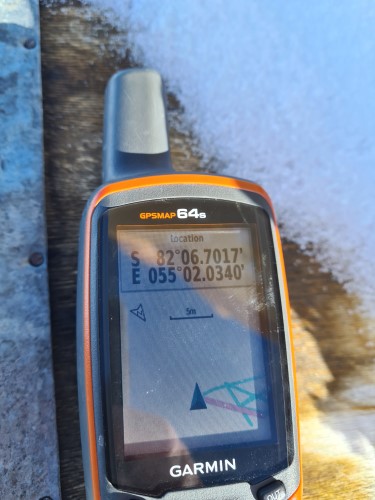
This is around 1.7km from the accepted location of the original base. Perhaps some of this difference is down to the inaccuracy of measurement in 1958 and part due to ice movement.
We spent around 20 minutes exploring the surrounds before making off to our secondary objective.
The Real Antarctic POI
As discussed on the main page, the best mapping of the continental shelf (not including ice shelf) to date was made by the British Antarctic Survey in 2005 and they placed the true Pole of Inaccessibility at
- Latitude: 82°53’14″S
- Longitude: 55°04’30″E
Given the excellent weather, the skills of our pilots and the extra fuel added for the trip, we managed a runway-free second landing at this ‘proper’ pole.
Remotest place in Antarctica
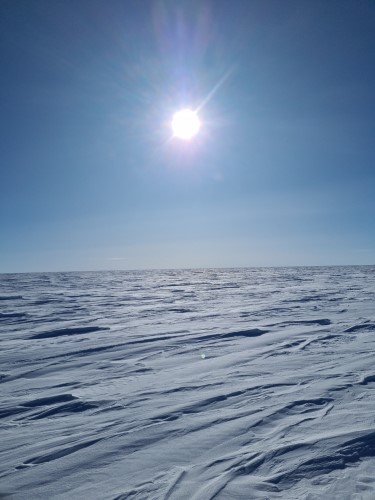
Of course, there’s nothing to see at this location other than hundreds and hundreds of miles of flat ice in every direction. But it was satisfying to become only the second recorded group to reach that exact point at 14:17 on 11th January 2023.
